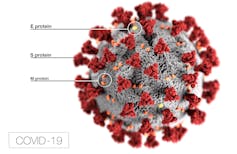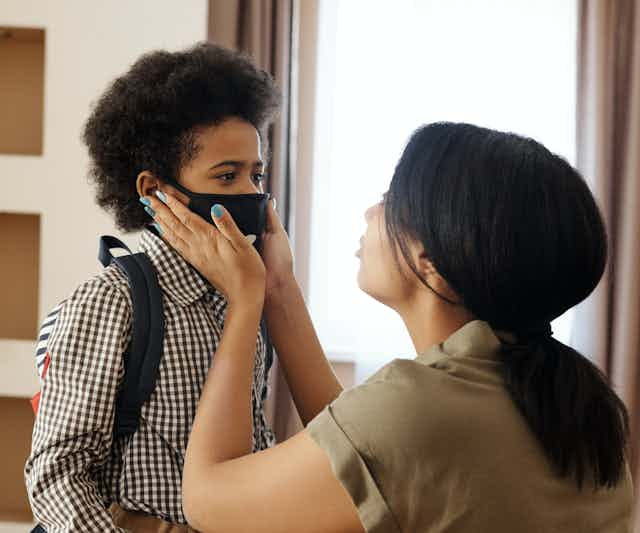As this first wave of COVID-19 continues, a growing number of complications and related illnesses are being connected to the novel coronavirus. A rare new disease syndrome appears to be caused by an overactive immune response in children, often hitting weeks after exposure to the virus.
We need to know more about different immune responses to ensure vaccines and treatments are as safe and effective as possible. This new disease emphasizes how much we do not yet understand about the potential impacts of the SARS-CoV-2 virus.
The number of these atypical cases in children has been growing since mid-April. The most common symptoms are fever, rashes and blood vessel complications from inflammation, which has led the U.S. Centers for Disease Control and Prevention (CDC) to call it multisystem inflammatory syndrome in children (MIS-C).

As a virologist, my research focuses on how viruses affect different areas of the body and cause different symptoms. Depending on the virus, associated syndromes can be rare and rely on how the virus interacts with a person’s immune response.
The most dangerous aspect of the novel coronavirus may be the infection of blood vessels, causing problems with blood pressure, inflammation and blood vessels leaking fluid into the lungs, producing the characteristic acute respiratory distress. Because of the variety of symptoms and problems with testing, linking the virus to these new cases of MIS-C has been difficult.
Exposure and symptoms
The first cases were identified in children three to four weeks after probable exposure but onset has been much faster in other cases. Some children with MIS-C test positive for the virus, while others test positive for coronavirus antibodies, indicating they were infected but no longer have the virus. While testing capacity is improving, inaccurate tests for the virus and antibodies complicates our understanding of the disease.
MIS-C initially appears as a persistent high fever that lasts for several days, often with body rashes; redness of the eyes, lips and tongue; and swelling of lymph nodes, hands or feet. It can cause abdominal pain, vomiting and diarrhea, and pain and swelling in the limbs.
This hyperactive immune response causes inflammation in blood vessels, which can affect the heart and blood pressure and cause a racing heart or chest pain. Some children experience difficulty breathing or rapid breathing linked to heart or circulation problems.
MISC-C and Kawasaki disease
MIS-C appears similar to Kawasaki disease, a rare condition in which children’s hyperactive immune response causes fever, rash and inflammation of blood vessels. Kawasaki disease can cause heart problems and, in rare cases, blood pressure drops that lead to shock.
Inflammation can stretch blood vessel walls, increasing the risk of blood vessels around the heart abnormally bulging or sagging — a condition called coronary vessel aneurysm — that puts them at higher risk of bursting in the future. In Kawasaki disease, managing blood vessel inflammation reduces the risk of aneurysms, so hopefully this approach can reduce long-term complications in MIS-C.

This Kawasaki-like disease is occurring at up to 30 times the normal frequency in areas hit hard by COVID-19. Most cases have positive or probable exposure to the virus, so researchers are trying to understand if these cases are Kawasaki disease triggered by coronavirus infection, or a new, emerging disease with similar symptoms.
Clinical treatments for Kawasaki disease have been effective, though additional anti-inflammatory drugs are needed more often for MIS-C. Typical Kawasaki disease lasts six to eight weeks, so more time is needed to discern the differences and potential long-term health problems of this new illness.
Because of the common link of immune hyperactivation, this inflammatory syndrome may be related to the cytokine storms or heart problems seen in adults with COVID-19. MIS-C may also be related to the circulatory problems linked to SARS-CoV-2, such as a sudden increase in reddened, painful toes.
A rare diagnosis
Doctors noticed the first cases mid-April and, while it is still very rare, hundreds of documented cases have appeared in the U.S. and Europe. Most cases come from places with high COVID-19 prevalence, such as the U.S., the United Kingdom, Italy, Spain and Germany. The CDC case definition limits MIS-C diagnosis to people under 21, which may cause cases in young adults to be unintentionally overlooked.
Children under 18 have represented one to two per cent of total COVID-19 cases in the U.S. and Europe, though we do not know if children have a lower susceptibility, or are a higher proportion of asymptomatic infections. Learning more about how SARS-CoV-2 affects children is essential to the safe reopening of communities, as we do not understand how asymptomatic infections might appear in children and how that shapes our understanding of the spread of the virus. Identifying different symptoms and immune responses of SARS-CoV-2 in children will also be critical to developing safe, effective vaccines.

